I’ve always said I pity people who like to do bird photography. Their goal is to get close to small critters that don’t want them close, which requires patience and a long lens. It’s a real challenge. I’ve never been much of a birder before, but now, well… COVID. I want to go out and photograph wildlife, and where I live, that means birds. If you’re in the same lifeboat, here are a few tips from a morning outing I did a couple of days ago.
First, you need a long telephoto lens. The good news is that in the last few years manufacturers are offering more of them, of good quality and at less expensive prices than the big, faster lenses. For well under $2000 you can get a nice zoom that reaches out to 500 or 600mm. They won’t have wide apertures (generally f/5.6-6.3 as the maximum), but with today’s cameras you can shoot at pretty high ISOs while still getting good results. And if it’s not sunny, you’ll need those high ISOs, because combine that long telephoto (prone to shake) with birds that often move, and shutter speeds around 1/1000 or higher are best.

My big lens is a Nikon 500mm f/4, which I fondly call “baby.” Paired with Nikon’s TC-20e III teleconverter (2X), that gives me 1000mm at f/8, and is still very sharp. With that much lens, I use my large Gitzo tripod and gimbal head whenever possible. I could use a monopod, but experience has taught me that I’ll be more steady, and get more sharp images if using this rig. I paired it with the Nikon D780, a fairly new full-frame (FX) Nikon body that has excellent high ISO capability. The other camera I used that day was Nikon’s Z 50, a mirrorless DX body.
If you have a good quality teleconverter (in other words, your photos are still sharp when using it), then that will give you increased focal length. As mentioned above, my 500mm f/4 lens paired with Nikon’s 2X teleconverter makes it a 1000mm f/8 lens. And when using an APS-C camera (like Nikon’s DX cameras), I get an additional 1.5X crop factor. All of that gets you closer to those wary birds. (If I’m traveling, I’ll usually bring my smaller Nikon 200-500mm f/5.6 zoom lens, both for it’s lighter and smaller size and the flexibility in being able to zoom)
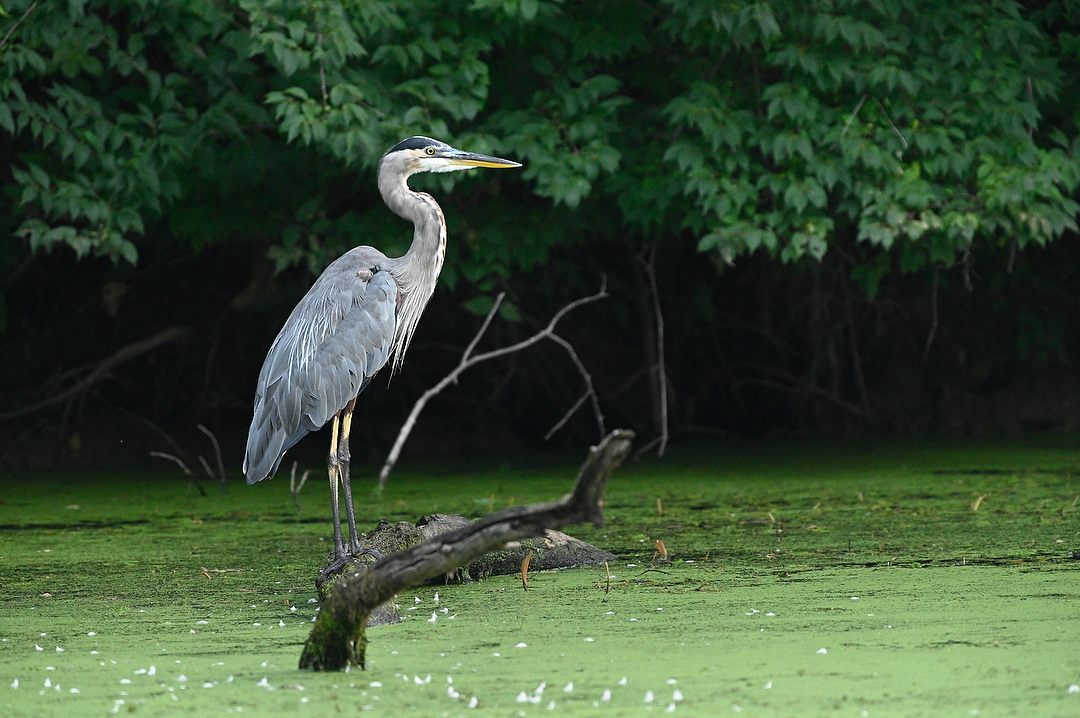
Here’s a Great Blue Heron, shot with the 500mm and 2X converter, for 1000mm, on a full frame body (Nikon D780). See the next photo for the difference a crop body makes. Nikon D780, Aperture Priority, Sunny white balance, ISO 7200, 1/1600 at f/8 in Matrix metering, -1.3 EV, Nikkor VR 500mm f/4G IF-ED lens with TC-20e III teleconverter for 1000mm. Unedited image.
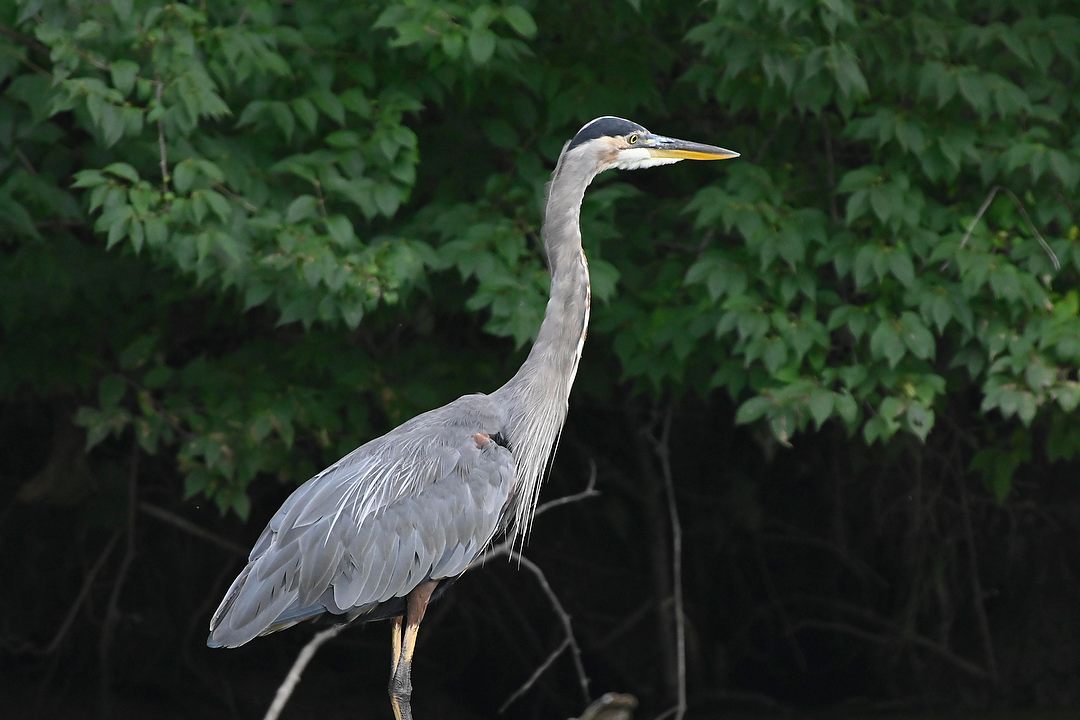
Same bird, same lens and teleconverter, same distance to subject. The only difference was that I put my Z 50, a DX body, with its 1.5X crop factor, on the lens. That gives me an equivalent of 1500mm to work with. Nikon Z 50, Aperture Priority, Natural Auto white balance, ISO 3200, 1/1000 at f/8 in Matrix metering, -1.3 EV, Nikkor VR 500mm f/4G IF-ED lens with TC-20e III teleconverter for 1000mm. Unedited image.
For exposure, I’m a big fan of Aperture Priority and Auto ISO. I’m going to shoot my lens wide open (maximum aperture), so Aperture Priority paired with Auto ISO helps me stay at a high shutter speed. Just like adding pepper or salt to a meal, I then use exposure compensation (EV) to shift my exposure as I like, lighter or darker.
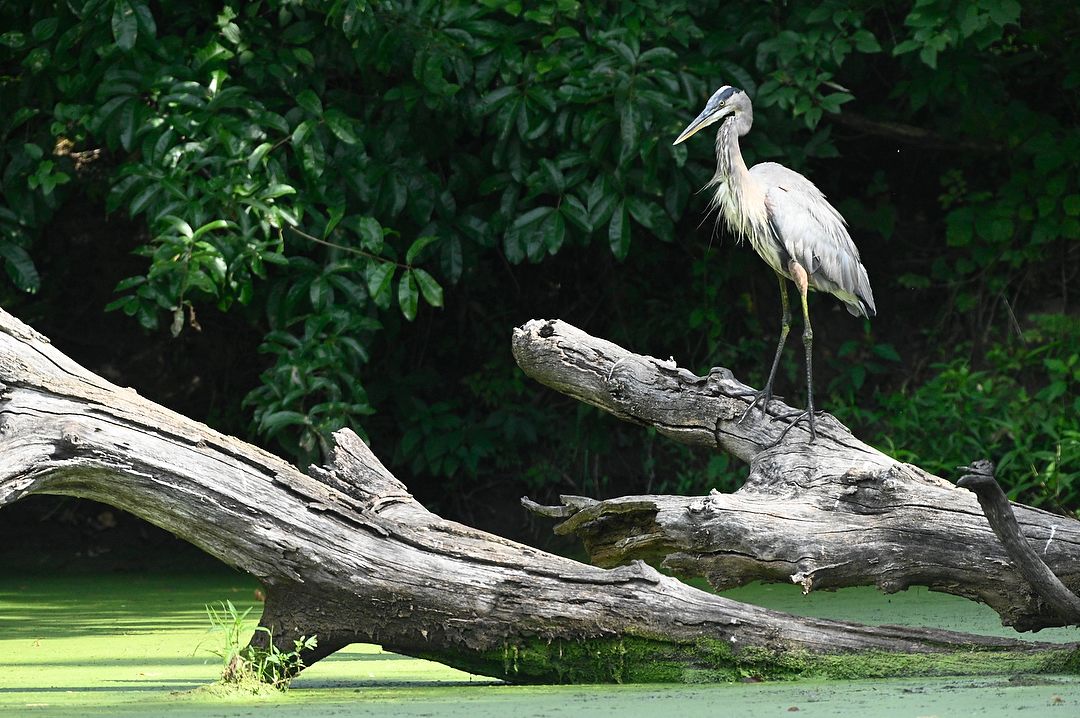
The light on the heron and the dark background worked really well, but at 0.0 EV the scene is a little washed out (overexposed). While I could certainly darken it on the computer, I’d rather get it as close to right as possible in the camera. Nikon D780, Aperture Priority, Sunny white balance, ISO 5000, 1/2000 at f/8 in Matrix metering, 0.0 EV, Nikkor VR 500mm f/4G IF-ED lens with TC-20e III teleconverter for 1000mm. Unedited image.
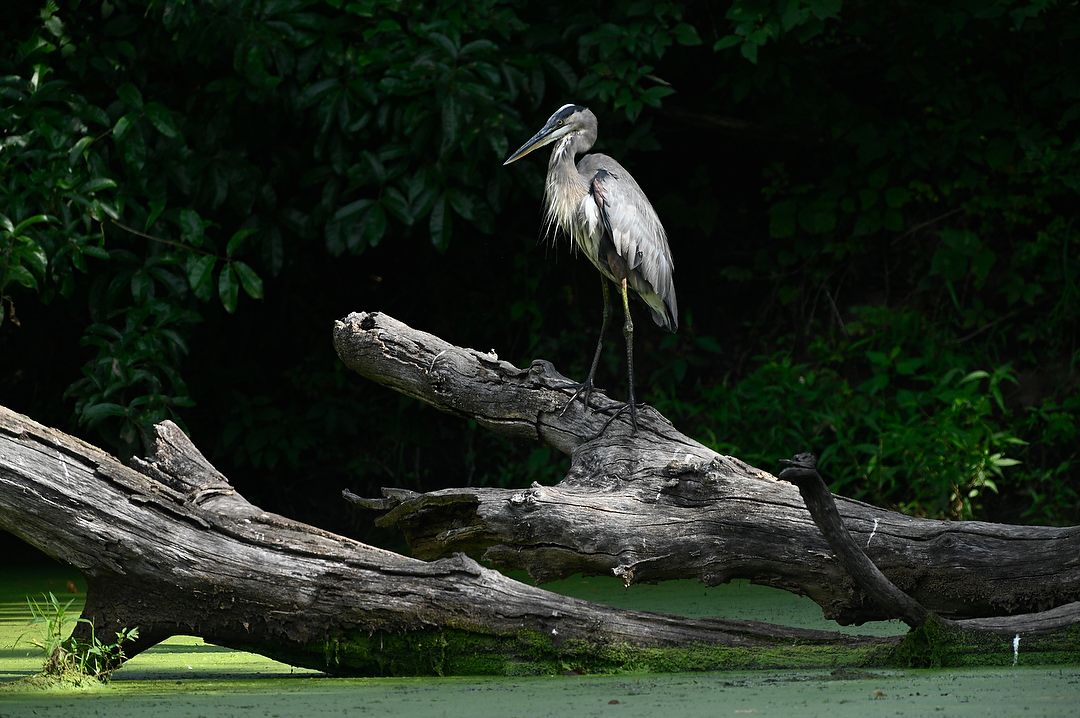
This is much better, and all I did was dial in some minus exposure compensation (EV). That darkening gives me a richer, better looking original capture. Nikon D780, Aperture Priority, Sunny white balance, ISO 2500, 1/2000 at f/8 in Matrix metering, -1.7 EV, Nikkor VR 500mm f/4G IF-ED lens with TC-20e III teleconverter for 1000mm. Unedited image.
Photography’s all about subject, light and background, which is just as important in wildlife, or in this case, bird photography. Pay attention to direction of light, and when possible, try to position yourself so the bird is sidelit. Also keep an eye on the background. Sometimes shifting a few feet left or right can be the difference between a clean or distracting background, which can means the difference between a mediocre or a good picture.
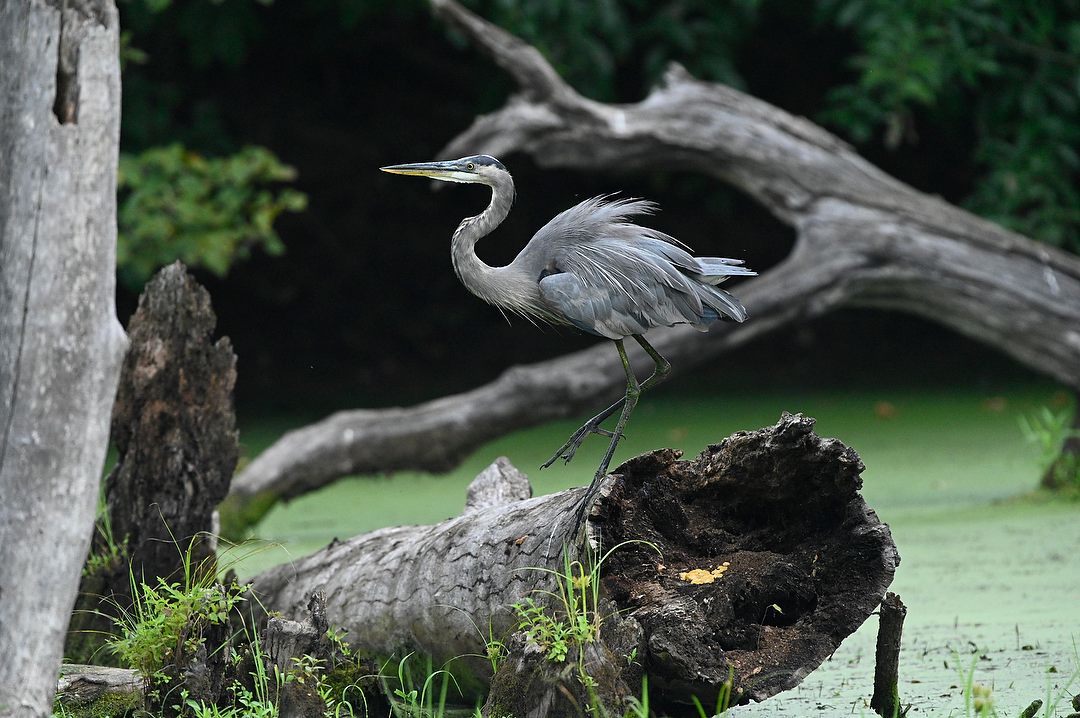
Unfortunately, in the wild you don’t have much control over the surroundings. I moved to get a cleaner background with this heron, but also knew while shooting that I’d want to crop it some later. Nikon D780, Aperture Priority, Sunny white balance, ISO 6400, 1/1000 at f/8 in Matrix metering, -0.7 EV, Nikkor VR 500mm f/4G IF-ED lens with TC-20e III teleconverter for 1000mm. Unedited image.
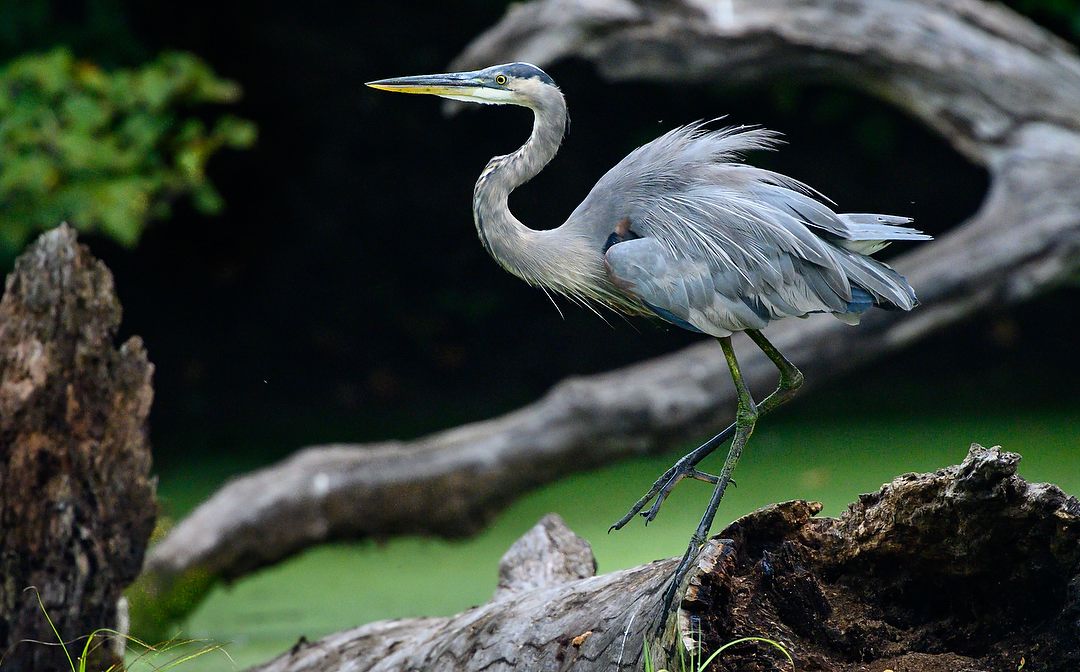
In addition to a crop to clean up the scene, I also did some light touches editing, adding a bit of lightness and contrast, then knocking down the extra resulting brightness of the logs and leaves. Nikon D780, Aperture Priority, Sunny white balance, ISO 6400, 1/1000 at f/8 in Matrix metering, -0.7 EV, Nikkor VR 500mm f/4G IF-ED lens with TC-20e III teleconverter for 1000mm. Edited image.
The final piece of the puzzle is smart cropping and careful (in other words, realistic) editing. Here are some more examples of that from this outing:
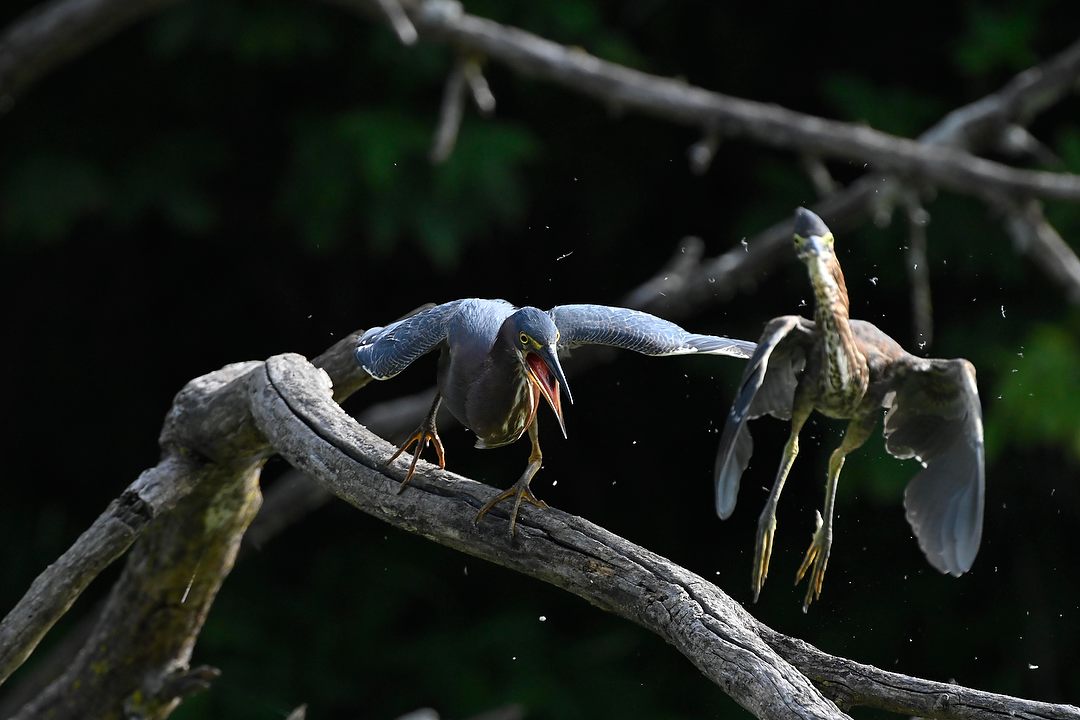
Green Herons are territorial, so when the one in back landed on this dead tree, I hoped there’d be some interaction. However, that action left me with dead space to the left, so it needed to be cropped. The strong sidelight and dark background, and a little underexposure, meant I wouldn’t need to do much else. Nikon Z 50, Aperture Priority, Natural Auto white balance, ISO 2000, 1/1600 at f/8 in Matrix metering, -1.7 EV, Nikkor VR 500mm f/4G IF-ED lens with TC-20e III teleconverter for 1000mm. Unedited image.

Final result after a bit of crop and slight touch of tone and contrast. Nikon Z 50, Aperture Priority, Natural Auto white balance, ISO 2000, 1/1600 at f/8 in Matrix metering, -1.7 EV, Nikkor VR 500mm f/4G IF-ED lens with TC-20e III teleconverter for 1000mm. Edited image.

After this Green Heron caught a small fish, it returned to the branch to eat. Both the light and background worked really well, I just needed to crop for more impact. Nikon Z 50, Aperture Priority, Natural Auto white balance, ISO 3200, 1/1250 at f/8 in Matrix metering, -1.3 EV, Nikkor VR 500mm f/4G IF-ED lens with TC-20e III teleconverter for 1000mm. Unedited image.
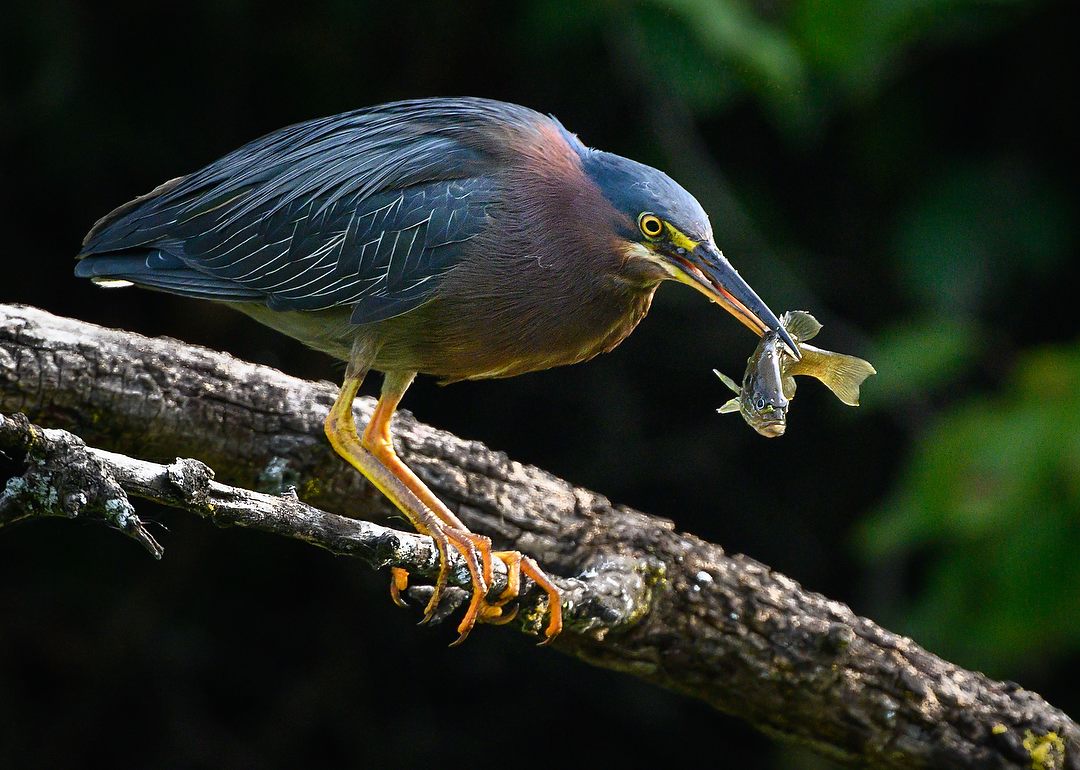
Final crop, to make the fish stand out better, plus a touch of tone and contrast to give the entire image a little more “pop.” Nikon Z 50, Aperture Priority, Natural Auto white balance, ISO 3200, 1/1250 at f/8 in Matrix metering, -1.3 EV, Nikkor VR 500mm f/4G IF-ED lens with TC-20e III teleconverter for 1000mm. Edited image.
(If you like this story, please share it with your friends and let them know about the links on photography that I post on my business Facebook page. I’m also on Instagram and Twitter, @reedhoffmann. And if you’re curious about the workshops I teach, you can find them here. And, you can subscribe to this blog on my home page.)

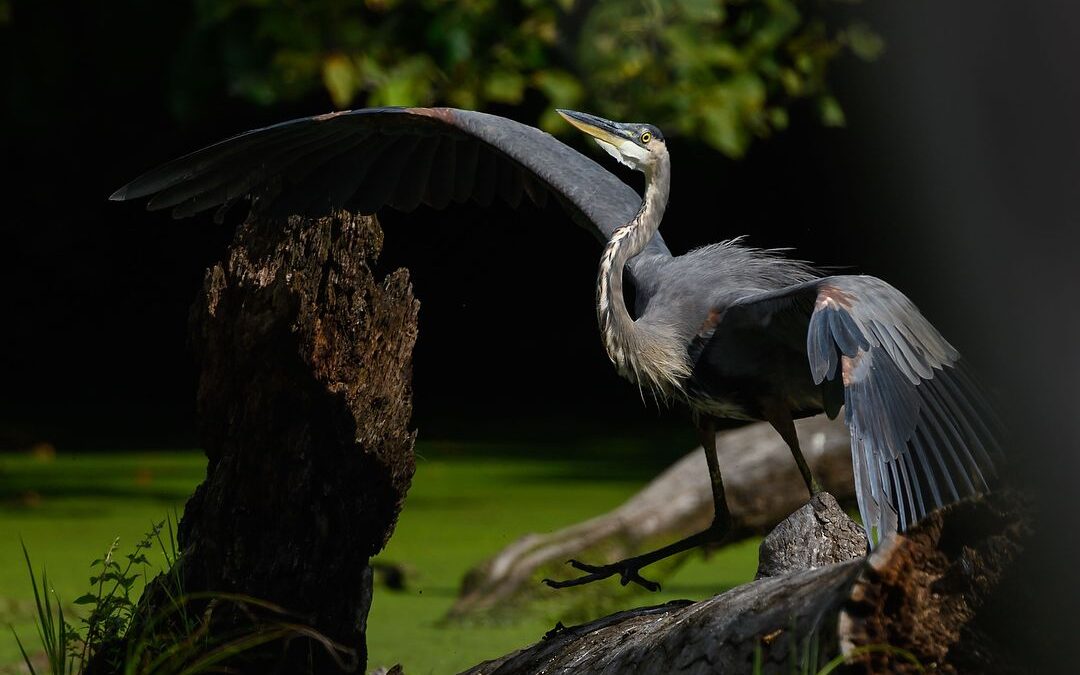
Great tips! Thanks Reed!
So very cool. FYI, I know who you are because of Mario Abney. Your shots of him are remarkable.
Great article! Was a little afraid to attempt bird photography, but now I see I have nothing lose and a lot to gain by getting out there.